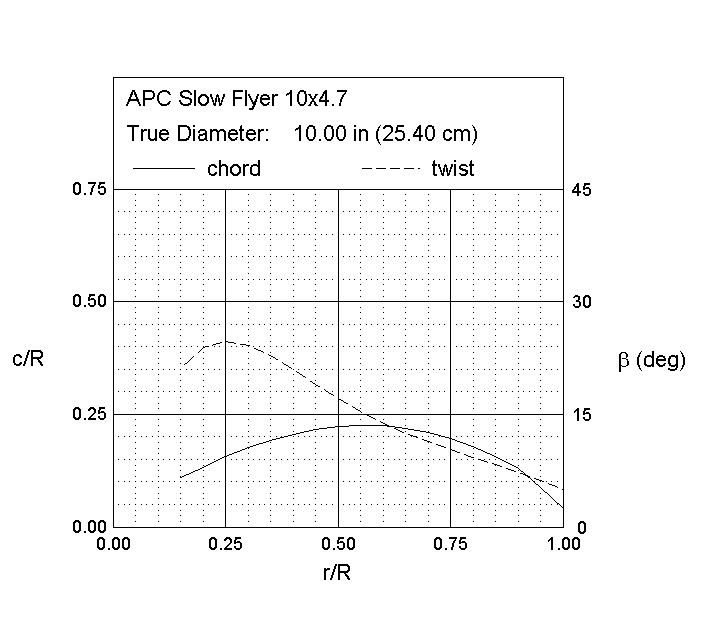 Thrust and drag coefficients from UIUC:
Thrust and drag coefficients from UIUC:
RPM CT CP
2377 0.1039 0.0431
2676 0.1058 0.0437
2947 0.1059 0.0437
3234 0.1083 0.0444
3494 0.1096 0.0450
3762 0.1121 0.0460
4029 0.1136 0.0466
4319 0.1155 0.0474
4590 0.1177 0.0484
4880 0.1199 0.0494
5147 0.1213 0.0500
5417 0.1228 0.0508
5715 0.1239 0.0513
5960 0.1253 0.0520
6226 0.1261 0.0524
6528 0.1274 0.0531

Geometry data from UIUC below. I believe, $c$ is aerodynamic chord length, $R = 0.127m$ (propeller radius), $\beta$ is propeller's pitch at the respective point. I believe I can calculate propeller's side area using simple quadratic rule. But first I need to know my reasoning is right.
r/R c/R beta
0.15 0.109 21.11
0.20 0.132 23.90
0.25 0.156 24.65
0.30 0.176 24.11
0.35 0.193 22.78
0.40 0.206 21.01
0.45 0.216 19.00
0.50 0.223 17.06
0.55 0.226 15.33
0.60 0.225 13.82
0.65 0.219 12.51
0.70 0.210 11.36
0.75 0.197 10.27
0.80 0.179 9.32
0.85 0.157 8.36
0.90 0.130 7.27
0.95 0.087 6.15
1.00 0.042 5.04

